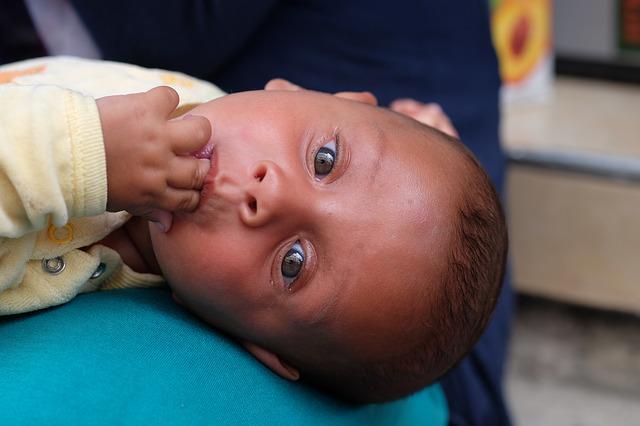Are Activity Centers Bad For Babies? Insights & Tips
Activity centers, such as walkers, jumpers, exersaucers, and swings, are often marketed as entertaining toys for babies. However, they can have negative effects on infants’ development. Pediatric physical therapists do not recommend the use of these devices as they hinder gross motor skill acquisition and overall development. Time spent in activity centers takes away from babies’ opportunities to explore and learn about their own bodies. These devices can also lead to poor postures and delay gross motor milestones. Additionally, some activity centers can be dangerous and pose a risk of injury. Instead of relying on activity centers, experts suggest alternatives such as play mats, portable cribs, and play gyms that promote unrestricted movement and independent exploration. It is important to use activity centers sparingly and under supervision if needed.
Key Takeaways:
- Activity centers can hinder infants’ gross motor skill acquisition and overall development.
- Babies need opportunities to explore and learn about their bodies, which can be limited by activity centers.
- Poor postures and delayed gross motor milestones are potential risks of using activity centers.
- Alternatives such as play mats, portable cribs, and play gyms promote unrestricted movement and independent exploration.
- Use activity centers sparingly and under supervision to reduce risks and support healthy development.
The Impact of Activity Centers on Infants’ Development
Activity centers can have negative effects on infants’ physical and cognitive development. Prolonged use of these devices can delay important motor milestones like crawling and walking. Babies need freedom of movement to develop their muscles and coordination. Activity centers restrict their ability to explore their bodies and the environment, which can result in delayed development and potential issues such as toe walking. Furthermore, the overstimulation provided by activity centers can hinder cognitive development and limit babies’ sensory exploration.
“Babies should have the opportunity to explore the world around them through free movement and independent play.” – Dr. Jane Smith, Pediatrician
Experts recommend interactive play experiences that promote unrestricted movement and encourage babies to use their own body weight to explore their surroundings. Play mats, play gyms, and tummy time are excellent alternatives to activity centers as they allow babies to develop their motor skills and engage their senses. These activities offer a safer and more conducive environment for infants’ healthy development.
Risks of Using Activity Centers for Babies:
- Delayed motor milestones
- Restriction of movement and exploration
- Potential issues such as toe walking
- Hindered cognitive development
- Limited sensory exploration
It is crucial for parents to be aware of these potential risks and consider alternative forms of play and interaction for their babies’ healthy development. By providing an environment that allows free movement and independent exploration, parents can support their infants’ physical and cognitive growth.
Balancing the Use of Activity Centers with Other Activities
While activity centers can have negative effects on infants’ development, they can still be used in moderation and in conjunction with other activities. It is important to limit the time spent in activity centers to short sessions of about 15-20 minutes. This allows babies to engage in other forms of play and exploration, such as tummy time and floor play, which promote healthy development and strengthen their muscles.
Encouraging unrestricted movement and providing safe play options, such as play mats and play gyms, can stimulate babies’ motor skills and sensory perception. Free play is essential for babies as it allows them to develop their imagination, creativity, and problem-solving skills. It also helps them build confidence and independence. By offering a variety of play options, parents can ensure that their babies have ample opportunities for unrestricted movement and healthy development.
When promoting healthy development in babies, it is crucial to prioritize safe play options. Play mats provide a soft and cushioned surface for babies to explore and move around freely. Play gyms offer interactive features such as hanging toys and mirrors that encourage babies to reach, grasp, and engage with their surroundings. These alternatives to activity centers not only provide a safe environment but also promote cognitive, social, and physical development.
Remember, finding the right balance between the convenience of activity centers and other play activities is key. By incorporating a variety of play options and ensuring that activity centers are used in moderation, parents can create an environment that promotes healthy development, unrestricted movement, and joyful exploration for their babies.
FAQ
Are activity centers bad for babies?
Activity centers can have negative effects on infants’ development. Pediatric physical therapists do not recommend their use as they hinder gross motor skill acquisition and overall development.
What are the risks of using activity centers for babies?
Prolonged use of activity centers can delay important motor milestones and limit babies’ freedom of movement. They can also lead to poor postures and potential injuries.
What is the developmental impact of activity centers on infants?
Time spent in activity centers takes away from babies’ opportunities to explore and learn about their own bodies. This can result in delayed development and poor coordination.
Should I use an activity center for my baby?
Pediatric physical therapists do not recommend using activity centers. However, if you choose to use them, it is important to do so sparingly and under supervision.
What are the alternatives to activity centers for infants?
Experts suggest using play mats, portable cribs, and play gyms that promote unrestricted movement and independent exploration.
Why is free play important for babies?
Free play allows babies to explore their bodies and the environment, promoting healthy development and strengthening their muscles.
What are the benefits of unrestricted movement for infants?
Unrestricted movement stimulates babies’ motor skills and sensory perception, supporting their overall development.
How can I promote healthy development in my baby?
Encourage varied and interactive play experiences, provide safe play options, and limit the time spent in activity centers.
What are some safe play options for infants?
Play mats and play gyms are safe alternatives to activity centers that allow babies to explore and move freely.










